I hit 1000 subscribers, then unsubbed 400 people
Season 8, Issue 11: Experiments I've been running on Mehdeeka
📬 In this issue:
Growth experiments I’ve run on Mehdeeka this season + learnings
I hit 1k subscribers then culled 376
What I’ll be testing going forward
A note on motivation
This week’s book rec is another Mehdeeka picnic blanket! Want one of your own? As long as you’re physically in Australia, all you have to do is share Mehdeeka using your referral link and you’re in the draw:
The winner of the highly popular Hobonichi Techo is… Vickie V - look out for an email from me!
Morning, Mehketeer,
I got a bit more serious about growing this newsletter this year. I started in 2020, basically just shared it amongst my friends and rarely on LinkedIn, and grew it slow and steady for three years. Then newsletters started to blow up a bit and — without sugar coating it — I had some envy towards newsletters I thought were “easier” (i.e. curation newsletters, newsletters that were rehashing other peoples content, etc) but were growing really quickly.
I even had one instance where another newsletter asked me how many subs I had and then replied “is that it” and ghosted me 👻 It didn’t feel so good. So I looked into what the big newsletters were recommending as growth methods and it basically boiled down to:
They were already well known in their niche before they started their newsletter and already had an audience
They got lucky with a bigger newsletter recommending them
And the big advice for anyone on Substack is “use the referral networks” but guess what, you have to get someone with a big audience to refer you for that to result in hockeystick growth.
As a small, lesser known individual without a big brand employer behind me, getting in front of those authors is both intimidating and difficult, so it hasn’t worked for me.
Anyway, here’s a look at my subscriber growth over the entirety of this newsletter existing. I’ve run it in seasons ever since the very beginning, so the plateaus are the breaks where I’m neither publishing nor promoting. There was also a 12-18 month break where I had thought I was done with this thing.
That brings us to Season 6, which is where the graph starts picking up and I was posting about it on LinkedIn more (in addition to posting more on LinkedIn in general and growing my network.) The first super steep rise is Season 7, when I started running ads, and the second steep jump is this season, where I was running ads with more of a strategy behind it.
Let’s talk about those ads first!
If you want to read about organic posting on Linked, check out this post:
Running ads for growth
So I specifically ran ads on a platform called Refind. People sign up to it, opt in to topics they’re interested, then get curated recommendations for that topic. I, as a newsletter, then say what topics I want to be shown alongside, and I pay for each subscriber I get from them with the ability to set a price I’m willing to bid to get shown to high quality subscribers.
Substack isn’t supported, so I’d have to manually import new subscribers. I found the experience pretty lacking. As a reader, you get the ad in your inbox, get taken to a landing page created by Refind which has no writing samples, and simply has a subscribe button.
In Season 7, I think I let this run for the whole season, and I thought it was also a poor experience if you signed up the day after I sent something out, and then you didn’t hear from me for a week, so for Season 8 I ran ads only from Monday to Wednesday morning, turning them off around 8am and sending out an issue at 10:30am.
Prior to Season 7, I had a very consistent 50% opening rate even after coming back from a break. This started dipping with every issue after I started using Refind, and the poor experience was my number one suspect for people signing up and never opening an issue.
My hypothesis was that limiting the sign up window to right before an issue would get better long term engagement from new subscribers. Over Seaon 7+8 I got 588 subscribers from Refind, but the quality was a lot like this:
The quality of subscribers is undeniably lower. My open rate sank to 36-38%.
A note on the star rating:
Substack ranks subscribers on a 1-5 scale based on “activity in the last 30 days”. They don’t give much more info than that, but my best guess is 5 stars = opens evey issue, 0 stars = opened 0 issues.
I also looked into Sparkloop, but they have a minimum spend of $2,000/month, which is out of budget for me. Refind introduced a new pricing model based on only paying for subscribers that open your newsletter, but without a Substack integration it’s a very manual process to check and report back to them who is engaged and who isn’t. It’s outside of my “minimal effort” ethos, so I won’t be advertising with Refind again unless an integration is released.
On a side note: If you’re thinking about creating a Substack, for some reason it seems to be the worst platform for integrations like this, it’s almost never supported and I don’t know why.
Introducing referral rewards
I got the idea for the weekly giveaway from Cheapskate London (specifically this interview, I have found the Creator Spotlight newsletter to be quite good for newsletter growth ideas.) Cheapskate usually does free tickets to events or consumer goods, partnering with local events and businesses since it’s clearly so specific to London.
I decided to do books because it would be easy for me to ship directly from a store to a Mehketeer and I wouldn’t have to go in store to buy it physically or deal with logistics too much. Also, I like reading.
It’s had good results but I don’t think it’s cost effective. Where Refind was costing $2-4/subscriber (and with a 30% activation rate it was more like ~$10-15/engaged subscriber), a book is ~$30-50 depending on hard/soft cover and shipping, and honestly here’s the sharing stats:
19 people have used their referral link
7 new subscriptions have referral links as their source
19 new subscriptions have “Substack” as their source
Referrals can be hard to track, especially if someone just uses a post link and not their referral link and posts it to LinkedIn, then it shows up as a “LinkedIn” source.
Nevertheless, not very scalable or effective.
Paid media
Occasionally I get free credit from LinkedIn trying to tempt me to run ads with them on the Mehdeeka business account, and when I do I use it.
I think from about ~$500 I’ve gotten one subscriber from it.
Lately I’ve been getting a lot of ads on Instagram for marketing newsletters. They’re very gen Z, and Instagram is my “safe space” which I’ve curated to be explicitly non-work topics, so I swipe as fast as I can when I see them. I don’t think I’d test ads on them, I couldn’t think of a chore I’d rather do less than voluntarily be in Meta ads manager.
Self promotion (🤮)
Marketing myrself is hands down the worst feeling. So I end up not doing it a lot of the time. It’s probably why this newsletter hasn’t grown the way others have. Also very hypocritical because I’m always telling other people to do it and talking about personal branding on LinkedIn.
I can do it, but I’ll find any and every way to procrastinate it, and it will take so much energy out of me even when doing the exact same type of promotion for a client feels like next to nothing.
I’ve been pushing myself to promote more, and these learnings have been pretty consistent over the Seasons:
Facebook groups are good for increasing views on posts, but not many subscribers come from it (3% conversion rate)
LinkedIn is difficult because of the “no links” rule, however the conversion rate is closer to 8% and although the data says they have below average star ratings according to Substack, my gut says the quality of subscribers is high/targeted
Posting in Slack groups gets marked as “direct” traffic, it has a 2.8% conversion rate, but has the second highest star rating — I would love to be able to separate “Slack” traffic from genuine “direct” traffic on this, because I do feel like the conversion rate should be higher
Referred subscribers have the highest star rating of all traffic sources, but as we see from this whole post, is pretty difficult to get
Reaching the 1k milestone
It was bittersweet reaching 1k because of the open rate dropping. This season in particular I feel like I was getting a lot more “likes” and comments on posts directly on Substack, and a lot more people messaging me privately to tell me it was helpful or that they like the newsletter, and at in person events I got “oh you’re THAT Kayla” a few times which was both embarrassing and nice to hear.
But reaching success didn’t really feel good, because getting ghosted or being told my newsletter wasn’t worth how much I was asking for a subscription counted for a lot more in my head. Even though I kept telling myself that Mehketeers are a niche within a niche, within another niche, and that I also didn’t really care about numbers!
So I decided I care more about my open rate than my subscriber count, and that I would cull all subscribers who had a zero star rating and signed up prior to a certain date (about three weeks earlier, because I had noticed that Refind subscribers sometimes took a few weeks to activate and then did convert into engaged readers.)
I sent out this email to 418 subscribers:
Here’s the stats on it:
I had nine people respond, some apologising and saying they’d just been really busy, some confirming they have security settings that block Substack from getting stats from them.
Then I also found a bunch of people didn’t respond, but suddenly they went from 9 to 2 stars on the activity scale which really confused me. I ended up unsubscribing 376 people.
Since then, I’ve sent one email, and my open rate has shot up to 55%. Prior to this, my highest open rate this season was 39%. I’m back, baby.
The lesson really is quantity over quality, for any audience. Whether it’s leads or subscribers, don’t let vanity metrics sneak in when evaluating your progress.
What I’ll be testing going forward
I’ve looked at the past performance of all of these experiments, but I haven’t been too inspired by the results to really think “next season I want to do xyz…”
I do have a big picture for a special kind of season that I teased in a Season 7 issue, which was mapping growth tactics to fundraising stage. I think having an overarching season storyline would be interesting, much like how episodic mediums such as podcasts and TV work. That is something I’m going to explore during the season break, but it’s more of a complete season structure change than a growth experiment.
Earlier this year I released a YouTube video (a guide to website rebuild projects) and I honestly didn’t promote it that much, but I’ve finally gotten around to cutting it up into shorts/reels/tiktok length videos and I’ll be using that to see if I can drive growth from social channels to this newsletter.
I’ve also been testing generic marketing topics in video format on LinkedIn. Admittedly I’ve only done two, and neither of them have linked back to this newsletter, but it’s something. I find being in front of a camera for these little things quite draining, where I found the bigger production of the YouTube video to be more all-encompassing and I could really focus on it and not think of it as “ugh this thing that will take me five minutes but which will actually turn into an hour”.
I’m open to any and all “could you test this and tell me if it worked or not” suggestions on behalf of any Mehketeer 🙏
Closing notes on motivation
I have talked a bit about how hard it is to be motivated to spend time putting a Mehdeeka issue together and then go promote myself, so this Metalabel issue about self promotion jumped out at me (it’s also where the above graphic is from.)
Content is king and context is queen. Understanding where a work comes from and what universe it exists within is what makes something special and valuable. Releasing establishes the context that lets the work be properly seen.
I also think self promotion is hard because it’s a grind, and sometimes you see content that performs really well, and is just… low effort? Or you put so much into doing an in depth piece, and all anyone wants is surface level content.
This issue, however, has made me reflect on the type of people that subscribe to Mehdeeka. It’s people who are interested in doing the work and appreciating the craft itself. So yeah, it’s a much smaller pool than “all marketers or people aspiring to build drop shipping companies and get rich quick”.
If that makes me sound salty, I was for a while and now I’m at the desalination plant washing it out.
Would love to hear your thoughts if any of this resonated with you so I feel less crazy,
Kayla


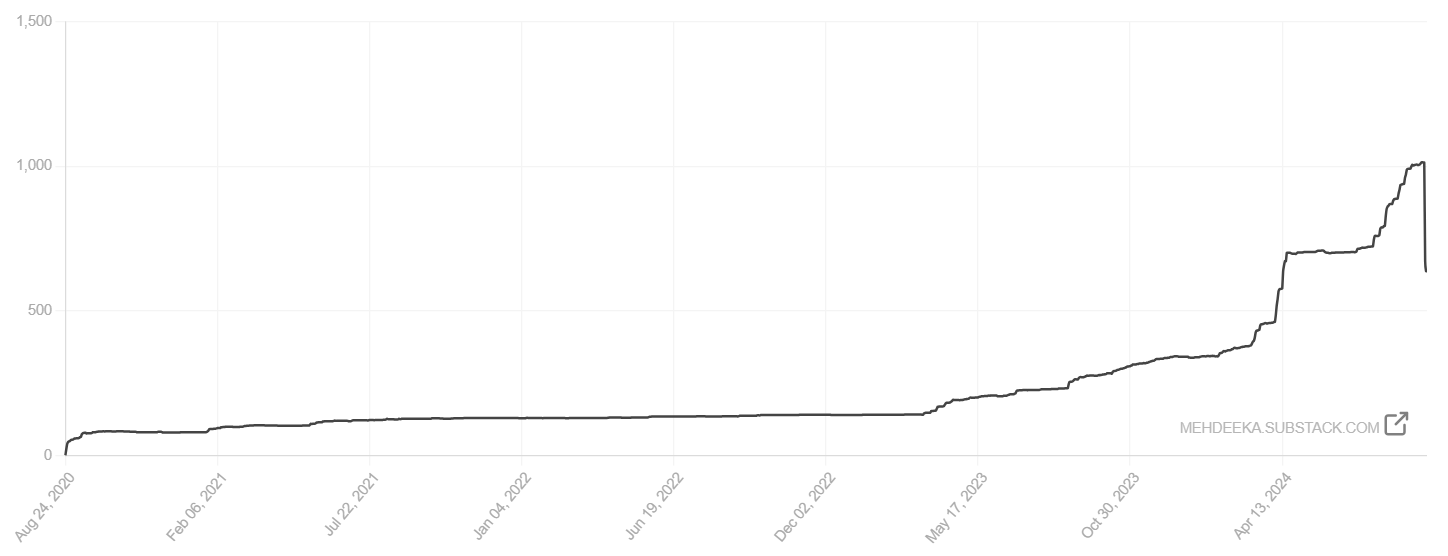
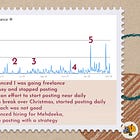
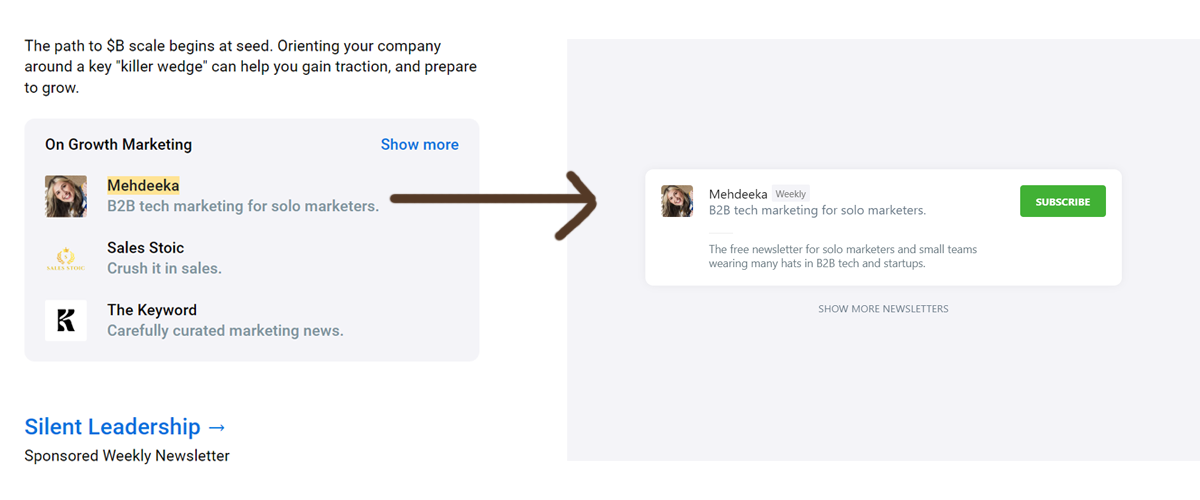
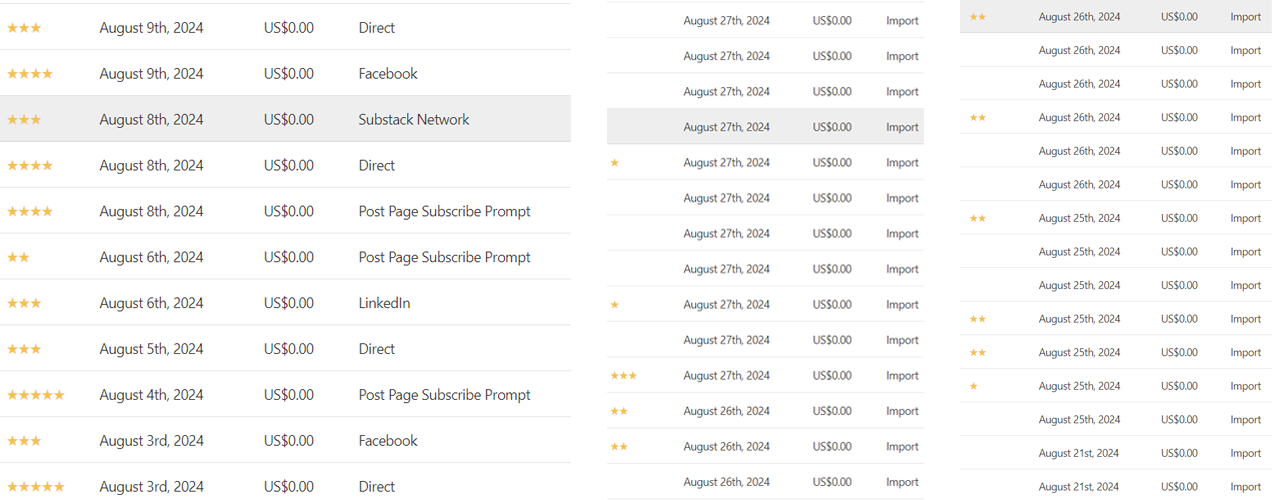
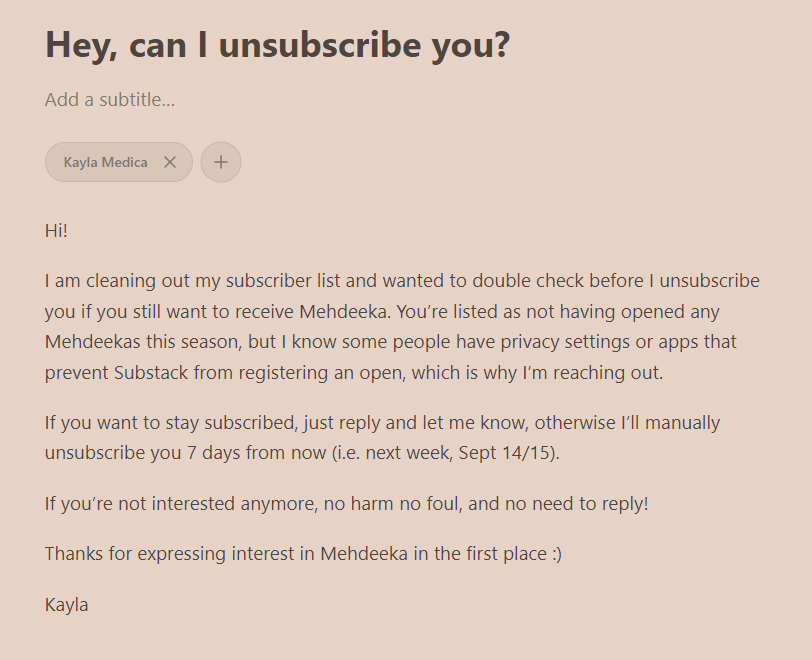



Awesome stuff Kayla!
What I resonate best with your newsletter is the person and thinking behind the marketing functions. Other newsletters tend to talk from a higher level which can come across as preaching from their pedestal above you.
What I love most about your newsletter is the human element you bring and the real honesty and thinking behind what you're talking about.
All of this to say, keep on going! What you write provides value to people like me and I enjoy seeing each issue drop into my inbox each week :)
Such a good read!
Resonated especially with the “you put so much into doing an in depth piece, and all anyone wants is surface level content.”
Here’s to finding our first 1000 True Fans - i.e. “the people who are interested in doing the work and appreciating the craft itself.”
👊🏻